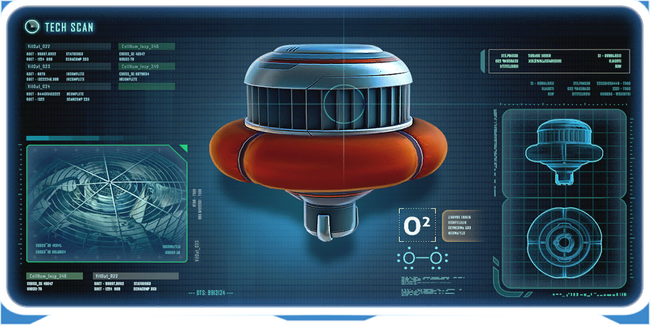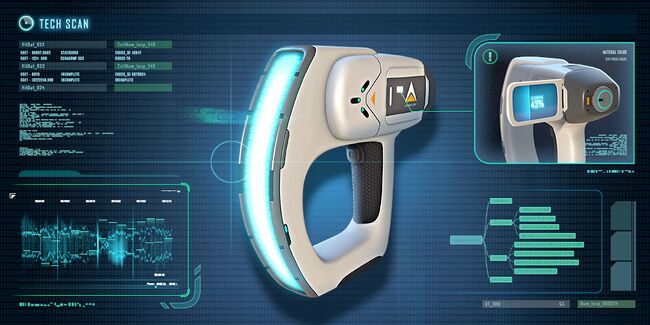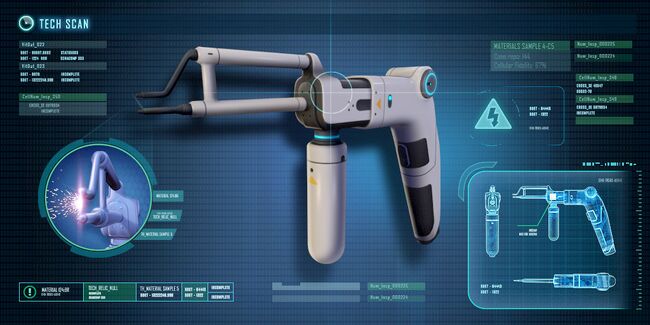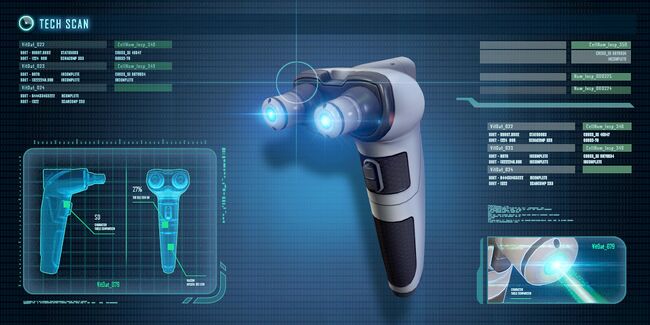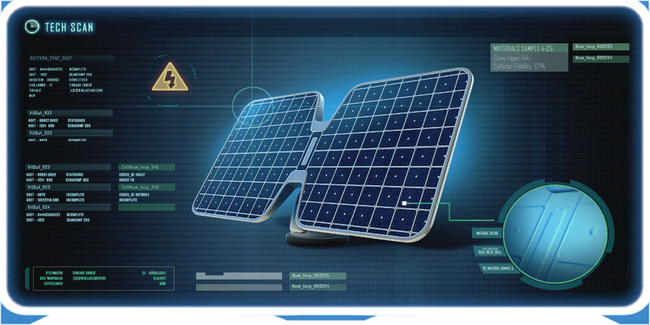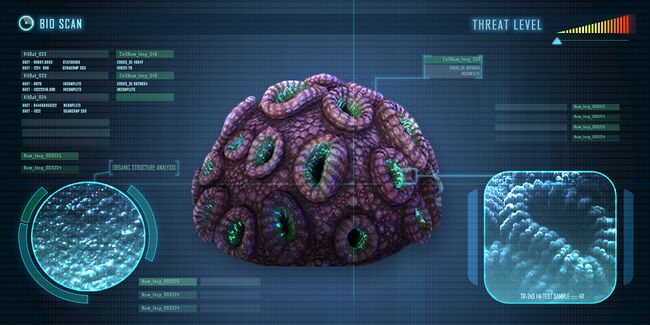Databank (Subnautica): Difference between revisions
(adding some coral) |
mNo edit summary |
||
| Line 172: | Line 172: | ||
==Geological Data== |
==Geological Data== |
||
{{Databank |
|||
|name=4546B Environment Scan |
|||
|image= |
|||
|description= |
|||
- Category 3 Ocean planet<br /> |
|||
- Oxygen/Nitrogen Atmosphere<br /> |
|||
- Extensive biodiversity<br /> |
|||
Safety Warnings:<br /> |
|||
- May support leviathan class predators<br /> |
|||
- Water contaminated with high levels of foreign bacteria<br /> |
|||
- Planet is beyond federation space, rescue unlikely<br /> |
|||
It is not recommended to explore this environment without hazardous material suits and extensive support apparatus. |
|||
|source=[[Repair Tool|Repair]] [[Lifepod 5]] |
|||
}} |
|||
---- |
|||
{{Databank |
{{Databank |
||
| Line 209: | Line 228: | ||
}} |
}} |
||
==Indigenous Lifeforms |
==Indigenous Lifeforms== |
||
====Coral==== |
====Coral==== |
||
{{Databank |
{{Databank |
||
Revision as of 16:16, 10 February 2019

|
Read at own risk This article contains unmarked spoilers. Players new to the game would want to avoid or be cautious toward this article. |
The Databank is the encyclopedia of entries that are visible on the encyclopedia of the PDA.
Advanced Theories
Alien Eggs
| Alien Eggs |
| <poem>Evidence suggests that a substantial number, if not all of the local species reproduce through egg-laying. Eggs can be found resting on the seafloor, buried beneath detritus, or even wedged into cracks in the rock.
Different species likely favor different biomes as their nesting grounds. Eggs discovered in the wild are in some form of natural stasis, likely awaiting ideal conditions in which to hatch, or the delivery of some vital enzyme which will kick start the process. It is impossible to calculate the species of the egg from the exterior, however it may be possible to stimulate a hatching response if an egg is relocated to a suitable alien containment unit.</poem> |
| Source: Pick up an Alien Egg |
Blueprints
Equipment
| Air Pumps |
<poem>Air pumps can be used to pipe breathable air to a remote location.
|
| Source: Unlocked by default |
| Handheld Scanner |
| <poem>The essential science and survival tool, the scanner can be used to add new blueprints to memory, and analyze unknown entities.
It emits electromagnetic radiation in the specified direction, which is reflected by the environment and then analyzed to determine the physical make-up of the targeted object. It has four primary functions. Blueprint Adquisition: Organism Analysis: Medical Analysis: Self-Scan: 'The Alterra Spectroscope Scanner - Understanding the world so you don't have to.'</poem> |
| Source: Unlocked by default |
| Repair Tool |
| <poem>The repair tool can be targeted at any common device - control panels, habitat modules, radios etc. - to stitch wires and seams back together at the atomic level. All good technicians keep one of these under their pillow.
Most people don't care why it works, just that it saved their life that one time - but in case you're curious, it combines scanner and fabricator technologies to determine the proper specifications for the targeted object, and then rearranges the available physical material to match the original specs. 'The Alterra Repair Tool: Get your fix.'</poem> |
| Source: Unlocked by default |
| Time Capsule |
| <poem>These sturdy containers are designed to store written and photographic evidence for later retrieval, in addition to a number of small items. Time capsules are often fabricated by marooned survivors seeking either to aid those who find themselves in the same predicament in the future, or to leave evidence of their plight which may be found long after their bodies have disintegrated.
Most emergency escape vehicles are equipped with a time capsule by default, usually found in the cockpit, and be jettisoned on take off. Alterra requests time capsules be stocked with tools and resources which will aid those who may discover them in the future.</poem> |
| Source: Scan Time Capsule |
Habitat Instalation
| Aquarium |
| <poem>The aquarium is designed to hold and sustain up to eight small aquatic organisms, and fits inside a regular multipurpose habitat room.
Aquatic creatures make up 70% of all known species, making the aquarium a commonly deployed tool in many exploratory operations. It is just as often used to house livestock for later consumption as it is to hold specimens for xeno research. An automated environment regulation system means there's no need to feed or care for your subjects. NB Due to its size the regular aquarium is not rated for breeding applications, and creatures are highly unlikely to mate. Construct a full size alien containment unit for this purpose.</poem> |
| Source: Unlocked by default |
| Fabricator |
| <poem>Fabrication technology is the power to rearrange matter at the atomic level. It was the catalyst behind the great expansion, and remains the backbone of the modern world.
Fabricators come in all shapes and sizes, but the most common are small enough to be wall-mounted, and are used for everything from constructing everyday implements to cooking dinner. It is common today for households to keep a store of generic base materials on hand for any eventuality.</poem> |
| Source: Unlocked by default |
| Habitat Builder |
| <poem>The Alterra handheld habitat builder has been an essential tool of xenoscientists, colonists and emergency relief crews across 11 different trans-govs for more than 50 years.
- Habitat modules are hermetically sealed from the outside environment Quick Start Guide: Primary habitat systems like oxygen generation and flood control, as well as modules like the fabricator draw power and will not function without it. Additional compartments reduce overall hull integrity, depending on the external pressure. 'Quick-Build Habitats: A home far, far away from home.'</poem> |
| Source: Unlocked by default |
| Solar Panel |
<poem>Solar power is the most prevalent power source in the galaxy, and so it is no accident that the standard solar panel is the default means of powering a habitat. A power source is a requirement of habitat oxygen generators and other onboard modules.
|
| Source: Unlocked by default |
Vehicles
| Mobile Vehicle Bay |
| <poem>The mobile vehicle bay is a deployable station equipped with fabrication drones, designed to construct small research and exploration vehicles from raw materials. It is a common tool in almost all industrial, scientific and colonization operations.</poem> |
| Source: Unlocked by default |
| Seaglide |
<poem>The seaglide is a personal transportation device designed for use in oceanic environments.
'The Seaglide: Anything that moves faster underwater is probably trying to eat you.'</poem> |
| Source: Scan Seaglide Fragments |
Geological Data
| 4546B Environment Scan |
| <poem>- Category 3 Ocean planet - Oxygen/Nitrogen Atmosphere Safety Warnings: It is not recommended to explore this environment without hazardous material suits and extensive support apparatus.</poem> |
| Source: Repair Lifepod 5 |
| Limestone Outcrop |
| <poem>These unusual geological structures often form around titanium and copper deposits, and are distinct to this planet. Closer analysis reveals the stone around the metal has been hardened against erosion, but the mechanism remains unknown.
Assessment: Titanium and copper source</poem> |
| Source: Scan Limestone Outcrop |
| Sandstone Outcrop |
| <poem>These common, porous outcrops seem to form around small amounts of precious metals, or otherwise these metals are part of a sedimentary buildup over time.
Assessment: Lead, silver and gold source</poem> |
| Source: Scan Sandstone Outcrop |
| Scattered Wreckage |
| <poem>Analysis confirms this wreckage is from the Aurora.
Outer layers of the material have oxidized, suggesting it has been heated to over 1200 Celsius. This pattern is consistent with hull disintegration during atmospheric entry. Salvage of intact portions of Alterra vessels is prohibited at legal, moral and technical levels, however scraps such as these may be reclaimed for their titanium content at any Alterra fabricator.</poem> |
| Source: Scan Metal Salvage |
Indigenous Lifeforms
Coral
| Brain Coral |
| <poem>A permanent, growing colony of microscopic organisms. This coral species has adapted to filter carbon dioxide from the environment, using the carbon to build the colony, and expelling the oxygen from specialized exhaust funnels. It is quite hardy, suggesting samples from a mature specimen could be grown artificially.
Assessment: Air tanks are equipped to siphon oxygen from the water where possible</poem> |
| Source: Scan Brain Coral |
| Coral Shell Plate |
| <poem>This variant of coral has adapted to survive in close proximity to other corals, filtering nutrients from the water and sharing them via a spore-like substance which grows around the base.
Assessment: No practical applications discovered</poem> |
| Source: Scan Coral Shell Plate |
| Giant Coral Tubes |
| <poem>The variety of coral formations on 4546B appear to be different solutions to the same problem of maximizing water and nutrient flow throughout the colony. These particular variants funnel water down a tube, filtering nutrients as they pass. Their size suggests they have been highly successful.
Assessment: Coral tube samples are rich in calcium, exploitable in bleach fabrication</poem> |
| Source: Scan Giant Coral Tubes |
| Table Coral |
| <poem>Each disk is an individual colony of microorganisms, filtering nutrients from the water.
Growth patterns indicate the colonies are in direct competition for positions with superior current or light. Unlike other coral species its structure is malleable, softly pulsating as it pumps nutrients to its extremities, and only turning rigid when it senses physical assault. The jewel-like nodes in the surface are concentrated build-ups of rare minerals the coral is unable to process. Assessment: Exploitable in computer chip fabrication</poem> |
| Source: Scan Table Coral |

